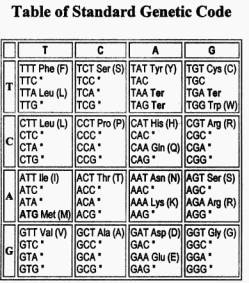|
from The Worldview Literacy Book copyright 2009 back to worldview theme(s) #5 |
| Discussion #5A: In
their effort to understand the observable universe, scientists believe
many assumptions are unnecessary.
These include postulating 1) the existence of God, 2) the
universe had a Creator, 3) there is an intelligent design or meaning
behind it, 4) God and His agents can work miracles, and 5) vital spirits
and souls are associated with living things.
So these have no place in astrophysicists' Big Bang Theory, in
their accounts of roughly nine billion years of physical evolution that
preceded formation of the Earth 4.6 billion years ago, nor in
biologists' theories of the origin of terrestrial life nearly
four billion years ago and its subsequent evolution producing such diversity
of living things.
In collecting the data from which his theory of evolution
emerged, Darwin was especially interested in beetles.
Entomologists have now described over 350,000 different beetle
species, and millions more are believed to exist.
Why so many? Those
who understand key concepts behind evolution, most notably random
mutations, natural selection, and geological time, have little
difficulty providing an explanation.
But why would God make so many of them? For centuries scientists have looked for signs of
intelligent design, proof of God's hands at work, etc. While they
recognize their framework is still evolving, as Nobel Prize winning
physicist Leon Lederman puts it, "The space available for God seems
to be shrinking."
Scientific materialists and vitalists differ most fundamentally
over what life is. The
former most basically require that living things be able to make copies
of themselves (replication), use matter and energy to regulate and
sustain themselves (homeostasis and metabolism), and repair errors that
may arise in their genetic or metabolic related structures.
Some extend that definition and require living things be made of
cells and they be able to reproduce and metabolize on their own—not
through the hijacking of some other organism's cellular machinery.
In contrast to such modern science conceptions of life, those
buying into vitalism build their definitions around the idea that living
things possess a vital spark, life force, or spirit.
Scientists have looked for a spiritual component to life:
comparing the weight of living things and dead corpses, investigating
such things as out of body experiences, near death experiences, reports
of auras around faith healers, séances in which mediums make contact
with the dead, and a wide range of paranormal experiences.
The consensus is no convincing evidence for it exists.
Some feel human spirituality exists only in the mind.
Indeed, researchers have triggered intense feelings of spiritual
transcendence using electrodes to stimulate certain regions in the
brain. At Harvard, they've
built a model of what they think the first cell was like. Others expect
to create life in the lab some day soon.
Want a recipe? See Figure #5a!
|
Discussion #5B: Just as scientists struggle to define life,
vitalists have different conceptions of what spirit is.
Some conceive of it in a way that is potentially measurable: as
an animating principle or vital
force that gives life to organisms.
It accounts for the difference between a living being and a
corpse. While spirit is
sometimes considered synonymous with soul, for many this latter term
implies having an immortal existence—something not necessarily
attributed to spirits. Many
connect spirit with apparitions, ghosts, demons, sprites, or
supernatural beings— with God falling in this last category.
It should be noted some conceptions of spirituality, particularly
those of mystics (see worldview theme #7), imagine all individual
spirits interconnecting to form greater unity, oneness, Cosmic Mind,
God, etc.
It seems that if something can't be measured, scientists don't
believe it exists. Not
surprisingly they haven't found evidence of spirits since these are
often thought of as the "non-physical,
non-quantifiable substance or energy present in living things."
In rebutting Lederman's above statement, physicist and Anglican
priest John Polkinghorne suggests, "God may act in subtle ways that
are hidden from physical science."
Biological scientists face challenges—notably answering cri-tics
of evolution (see Figure #5b) and providing a detailed account of the
origin of life. Lacking that, how can they be so unequivocally sure that
production of complex living structures doesn’t
require a Creator’s purpose driven vital impulse? With respect to
psychology—which originally referred to "study of the soul"
but now is the nearly exclusive domain of scientific materialists—its
great unsolved problem involves providing a detailed account of what
human consciousness is and the mechanism by which it functions.
Until scientists can do this, how can they be so sure
consciousness is not what it has long been thought to be, namely "a
process not a thing, held by religious tradition to reside in the soul
or spirit, and identified with self awareness?" Overwhelming anecdotal evidence exists
for a real spiritual presence in human beings and for events that cannot
be explained using the scientific conceptual framework.
Stories of prophetic dreams, the presence of ghosts, angels and
super-natural beings, and legends of miracles abound throughout history. More recently, reports of thousands of people, many
declared clinically dead, who survived a near death experience show an
impressive consistency that cuts
across cultural and religious boundaries.
They include many things science can't explain.
People whose perception is not restricted to what the five
ordinary senses reveal but who also rely on an intuitive sense are most
likely to connect with their spiritual essence. As Gary Zukav puts it, "When a multisensory
personality looks inside itself, it...comes to experience the energy of
its soul." |
|
Figure
#5a Is
This Really What Life is All About?
|
Figure #5b Questioning Evolution Can
Natural Selection, Random Variation Produce
a Complex Structure Like an Eye?
|
